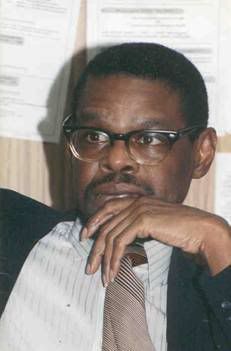Written for Educators
By Eddie Griffin
Friday, August 22, 2008
Here is a page from the Black Panther Old School: Teaching problem-solving techniques by “mapping” reality, interpolated from Alfred Korzybski’s “Science and Sanity”.
Probably, the simplest way to explain it is like this scenario:
In our minds, we map a mental picture of the world we engage in. When the map does not accurately depict empirical reality, we misjudge situations and make mistakes in our engagement.
A classic example of this phenomenon would be a man sitting in a car at a stop sign, waiting for the traffic to give him a break, so he can traverse to the other side.
An accident at the intersection tells us that a misjudgment has been made on the part of the man sitting at the stop sign. The “map” inside his head was simply incorrect. Therefore, he proceeded with a distorted and false mental picture of the true external situation.
He either miscalculated the speed of the oncoming car, or miscalculated its distance. Simple mathematics inside the head would signal when it is “safe” for the man to make a dash. Even if the man fails to understand the physics of distance and speed, he should be able to judge, intuitively, if it is “safe” to cross.
What is missing in the mental equation is the “risk” factor. What is “safe”?
Here, a whole number of subjective issues come into play, the most egregious of which is the driver who did not see the other car coming.
How can a person miss seeing another vehicle barreling down the road? It is inconceivable but common. Something in the composition of the driver’s mental picture did not include the other car. Simply put, the other car was obliterated by “mental blinders”, commonly put on by the attitude of “seeing only what I want to see”. Therefore, the driver only saw that the road as “his”, when it actually was not.
The same principle holds true when we map out a social problem and try to solve it. An incorrect mental picture will produce a false answer.
Being wrong is not as big a crime as a terminal mistake. It’s one thing to come up with a false answer, but another when comes the attitude of forcing a round peg into a square hole. The War in Iraq is a classic example of trying to force fit a round peg into the square hole conceived by politicians with a faulty mental map of the world.
It is of ultimate importance that our subjective mental map of reality matches the objective, empirical world. For then, with correct information, accurate data, a keener sense of casual relations, and intelligent mental diagnostic and analytical tools, we can make better decisions in our problem-solving.
Friday, August 22, 2008
Subscribe to:
Post Comments (Atom)



1 comment:
would you be interested in participating in DonorsChoose?
http://www.donorschoose.org/homepage/main.html?zone=0
Post a Comment